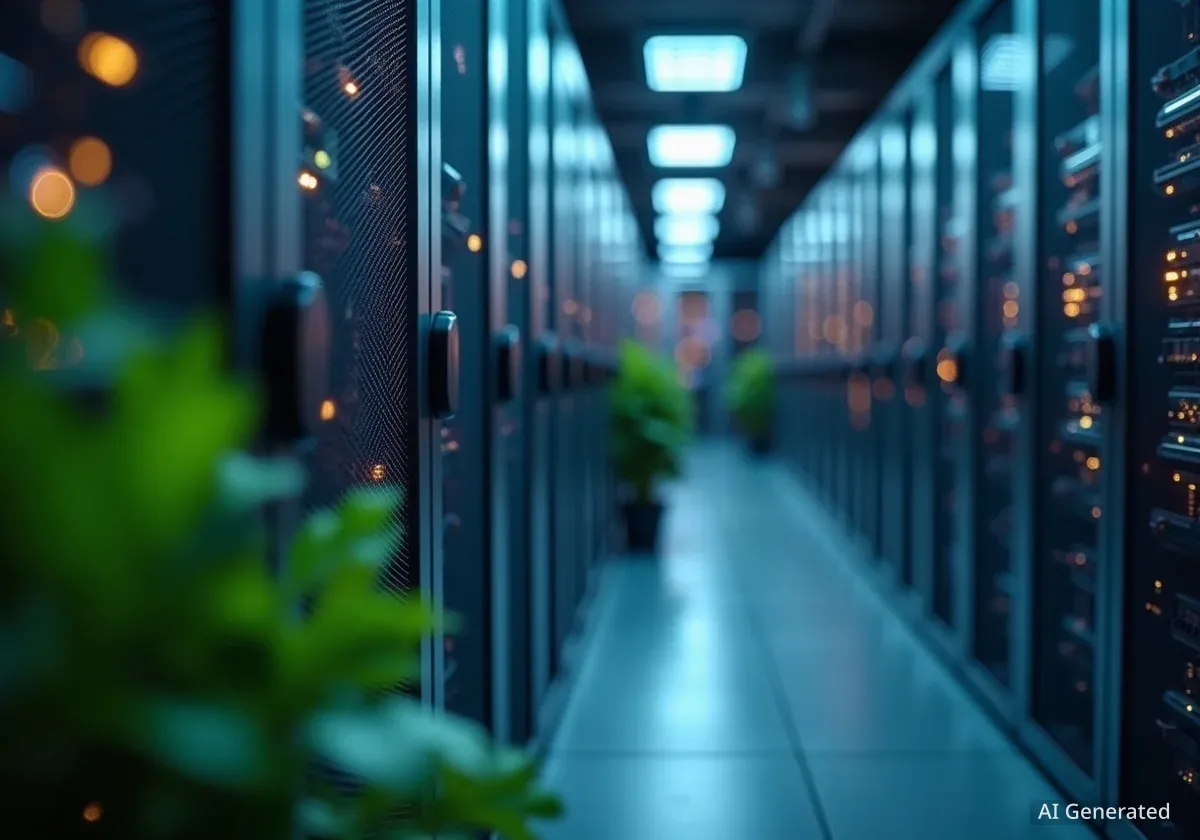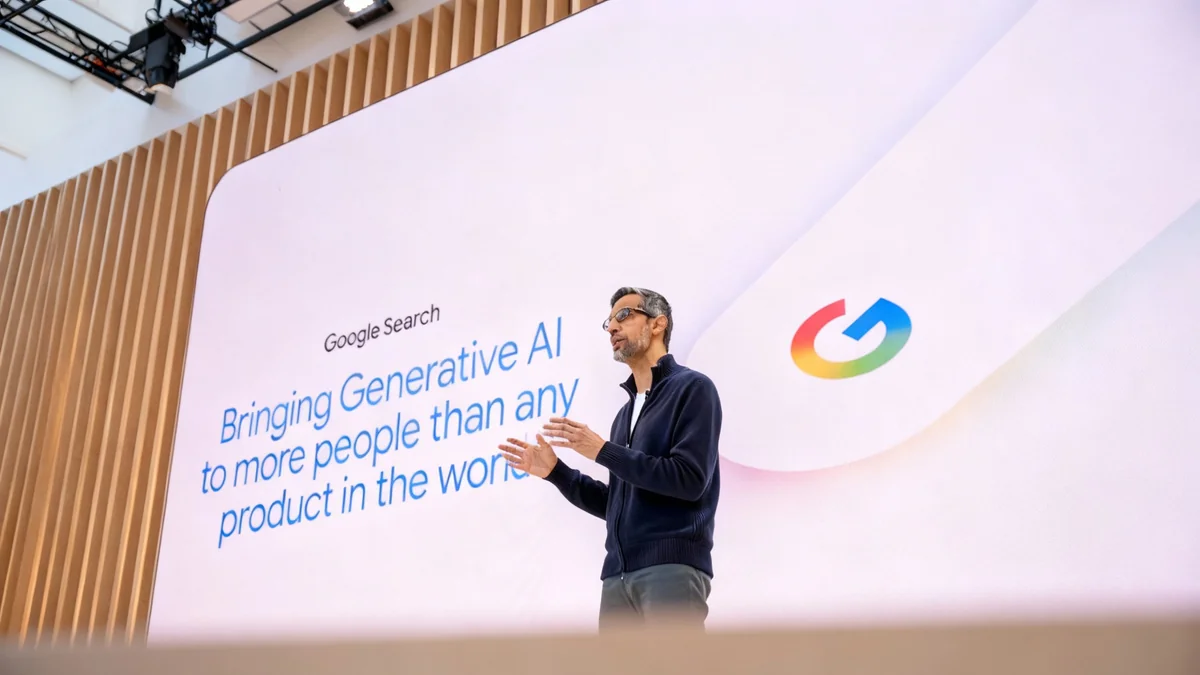Amazon executives have outlined a strategy for using artificial intelligence to address climate change, detailing how the technology is already being used to analyze vast amounts of environmental data, identify operational inefficiencies, and accelerate the development of new sustainability solutions. The company proposes a framework it calls “3D Sustainability” to categorize these efforts.
In a recent commentary, Amazon’s Chief Sustainability Officer, Kara Hurst, and its Chief Scientist for Sustainability and AI, Kommy Weldemariam, argued that focusing solely on the risks of AI overlooks its significant potential for positive environmental impact. They presented data from Amazon's own operations to illustrate how AI is being applied to make sustainability efforts more scalable and effective.
Key Takeaways
- Amazon is promoting a “3D Sustainability” framework: Digitizing data, Discovering insights, and Delivering breakthroughs.
- The company reports using AI to process 15 billion carbon-related data points in 2024, reducing analysis time from months to minutes.
- AI has helped Amazon avoid over 4.2 million metric tons of packaging material since 2015 by optimizing packaging sizes.
- An AI system identified an underground water leak at an Amazon facility, preventing the loss of 9 million gallons of water annually.
- Executives suggest AI can make sustainability data accessible to smaller businesses by dramatically lowering the cost and time of environmental analysis.
AI Streamlines Sustainability Data Analysis
A primary challenge in corporate sustainability has been the cost and complexity of collecting and analyzing environmental data. According to Amazon, AI is fundamentally changing this process by automating data processing on a massive scale.
The company stated that it processed 15 billion carbon-related data points in 2024 alone. With AI-powered tools, analysis that previously took months can now be completed in minutes. This acceleration has enabled Amazon to conduct over 4,000 comprehensive product lifecycle assessments (LCAs) in a single quarter.
What is a Product Lifecycle Assessment?
A Product Lifecycle Assessment (LCA) is a method for evaluating the environmental impacts associated with all stages of a product's life, from raw material extraction through materials processing, manufacture, distribution, use, repair and maintenance, and disposal or recycling.
To illustrate the efficiency gains, Amazon’s scientists estimate that an LCA for a simple product like a T-shirt, which could take months of costly analysis, can now be completed by AI in approximately 17 minutes. This transformation, they argue, makes crucial sustainability data accessible to businesses of all sizes, not just large corporations with dedicated teams.
By digitizing emissions and sustainability data, companies can gain a clearer understanding of their environmental footprint while also identifying opportunities for cost-saving efficiencies in their operations.
Uncovering Hidden Inefficiencies with AI
Beyond processing known data, AI systems are being deployed to discover patterns and inefficiencies that may not be apparent to human analysts. These systems can monitor operations in real-time to flag waste and optimize resource use.
Amazon provided several examples from its own logistics network. AI algorithms help identify products that are likely to be damaged before they are shipped, assist customers in choosing better-fitting clothing to reduce returns, and recommend the most appropriate package size for an item.
According to Amazon, these AI-driven packaging optimizations have helped the company avoid using more than 4.2 million metric tons of excess packaging material since 2015.
In another specific case, an AI tool detected an anomaly in water usage at one of the company's facilities. By analyzing metering data, the system concluded there was an underground water leak. After maintenance crews located and repaired a faulty valve, the fix prevented an estimated 9 million gallons of water from being lost annually.
These examples highlight how AI can identify small, seemingly minor issues that, at a large scale, result in significant resource and cost savings.
Accelerating New Climate Solutions
The third component of Amazon's framework focuses on AI's role in innovation and the creation of entirely new pathways for decarbonization. The technology's ability to model and simulate complex systems is accelerating research and development in critical areas.
“AI is the force multiplier that sustainability efforts have desperately needed,” stated Kara Hurst and Kommy Weldemariam, emphasizing the technology's potential to move climate action from incremental improvements to exponential progress.
Generative AI models are being used to design novel materials for carbon capture, while other AI systems can simulate resilient agricultural models to improve food security and land use. The executives noted that what once required years of laboratory work can now be modeled, tested, and refined in a matter of months.
This acceleration is particularly evident in the startup ecosystem, where companies are using AI to:
- Invent more efficient and sustainable batteries.
- Engineer next-generation biofuels.
- Discover new circular materials that reduce waste.
Broader Implications for Climate Action
While public discussion around AI often centers on job disruption or its energy consumption, proponents argue that its application in sustainability offers a compelling counter-narrative. The ability to quickly analyze complex environmental systems, optimize global supply chains, and speed up scientific discovery presents a significant opportunity.
The framework proposed by Amazon suggests a systematic way to apply AI to environmental challenges, moving from basic data management to advanced innovation. The core idea is that AI can help organizations overcome the initial barrier to climate action: the high cost and effort of simply understanding their own impact.
As AI technology continues to advance, its integration into energy grids, transportation networks, manufacturing processes, and environmental monitoring will likely become more widespread. The challenge, according to the Amazon executives, is to foster wider adoption and create systems for sharing how these tools can be applied for the public good, ensuring the benefits can scale globally.





